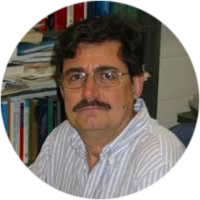Screening Effects on Electron Capture Rates and Type Ia Supernova Nucleosynthesis
Screening Effects on Electron Capture Rates and Type Ia Supernova Nucleosynthesis
View
Abstract
Type Ia supernovae (SNe Ia) are believed to be a thermonuclear explosion of a white dwarf, but the mass of their progenitors is still an open problem. In near-Chandrasekhar-mass (near-MCh) models of SNe Ia, the central density reaches >109 g cm-3. The electron chemical potential becomes higher than the Q-values of electron capture (EC) transitions between fp-shell nuclei, so a portion of the available electrons is captured by iron group elements and thus neutron-rich isotopes are formed. Since EC reaction rates are sensitive to the density, the degree of neutronization is a key to distinguish near- and sub-MCh models. In order to compare observations and theoretical models, an accurate treatment of EC reactions is necessary. In previous theoretical works, however, effects of electron screening on ECs are ignored. Screening lowers EC rates and thus leads to a higher electron fraction. We implement electron screening on ECs to calculate explosive SN Ia nucleosynthesis in a near-MCh single degenerate model. It is found that some of neutron-rich nuclear abundances, namely those of 46,48Ca, 50Ti, 54Cr, 58Fe, 64Ni and 67,70Zn, decrease when screening effects on ECs are considered. Of these, 50Ti, 54Cr and 58Fe are particularly interesting because a significant portion of the solar abundance of these nuclei is presumed to originate from SNe Ia. We conclude that implementing the screening effect on ECs in modern SN Ia models is desirable to precisely calculate abundances of neutron-rich nuclides.




